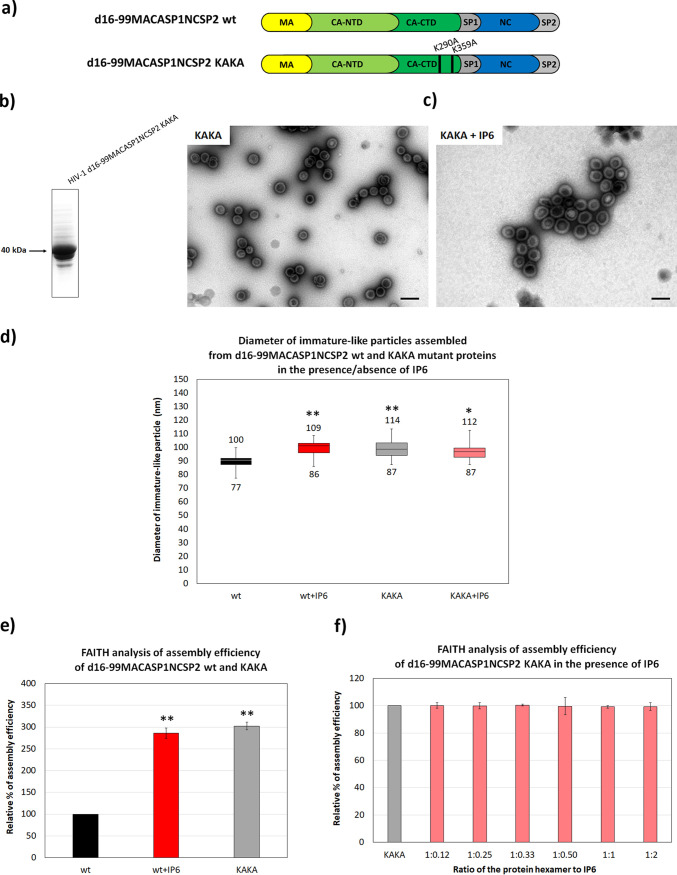FIG 4.
Assembly efficiency of KAKA mutant of HIV-1 d16-99MACASP1NCSP2 protein in the absence or presence of IP6. (a) Schematic representation of HIV-1 d16-99MACASP1NCSP2 wt and KAKA mutants. (b) Coomassie brilliant blue-stained SDS polyacrylamide gel of purified HIV-1 d16-99MACASP1NCSP2 KAKA. (c) TEM analysis of negatively stained KAKA mutant assembled in the absence (left panel) or presence (right panel) of IP6 at a final concentration of 2.5 μM, corresponding to the CA hexamer ratio:PA of 1:1. Bars represent 200 nm. (d) Diameters of immature VLPs assembled from wt and KAKA d16-99MACASP1NCSP2 proteins in the absence or presence of IP6 (2.5 μM). (e) Percentage of assembly efficiency of d16-99MACASP1NCSP2 wt in the absence (black column) or presence of IP6 (2.5 μM) (red column) compared to the KAKA mutant (gray column) in the absence of IP6. (f) Percentage of assembly efficiency of KAKA mutant in the absence (gray column) and presence of different concentrations of IP6 (salmon columns) corresponding to the indicated protein hexamer:IP6 ratio. P values were assessed by ANOVA using the Tukey-Kramer test (*, P < 0.05; **, P < 0.01).

